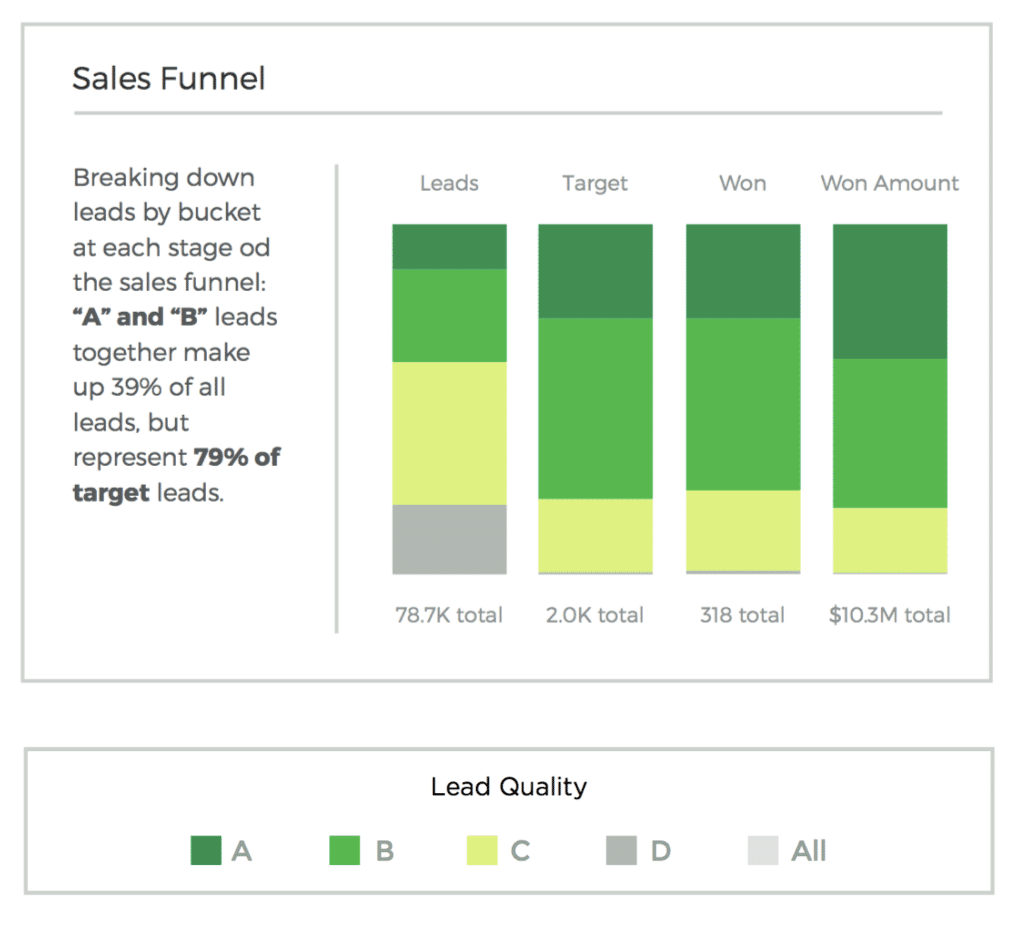Technology Provider: Ignite Technologies (which acquired Infer, a Mountain View, CA-based marketing optimization and machine learning company).
User Company: WalkMe simplifies user experience by providing step-by-step product usage instructions for B2B tools like SAP, Oracle, Microsoft Dynamics 365, SalesForce, etc.
Industry: B2B Software
Application: Sales and marketing
Problem
WalkMe has a broad target market, expanding across multiple verticals and companies, including small, medium and enterprise organizations. Therefore, their buyer personas also vary widely. This posed many problems for WalkMe in terms of sales and marketing:
- A high influx of varied leads made it difficult to gauge lead conversion potential
- A long B2B sales cycle presented a problem of measuring and optimizing marketing and advertising campaigns in real time
- The sales and marketing teams’ definitions of a quality lead were different (a problem made worse by the variety of leads across different prospect business sizes)
Actions Taken
WalkMe’s marketing team integrated Infer’s Predictive Scoring model with the company’s Salesforce CRM, which assigned “fit scores” to each lead. Infer reportedly calculated these fit scores based on several factors, such as the lead company’s firmographic data (industry, revenue, employee count, job openings, etc.), technographic data (technologies the target companies were using), web and social presence, technology vendors, patents, trademarks, and more.
Infer General Manager Paul Fung told Emerj that these score calculations and rules are set up and calibrated differently for Infer’s varied clients.
Infer claims to have categorized the inbound leads in decreasing order of conversion potential: from A to D, with A leads scoring 87 and above; B leads, between 57 and 86; C leads, between 19 and 56; and D leads, below 19. Infer claims that the top leads (A and B), together contributed to 39% of WalkMe’s lead volume.

Infer says that WalkMe also uses the Infer platform to “optimize its advertising bidding around keywords that drive the highest scoring leads.” Omri Erel, WalkMe’s Head of Advertising and Performance Marketing, elaborated that the company used different advertising systems, which optimized the bidding amount according to the number of Infer A, B and C Leads certain keywords deliver. He also added that WalkMe uses MAP in tandem with Infer to mail quality leads.
Results
According to the Sales Funnel image below, WalkMe targeted about 2000 top leads out of the total 78,700 leads. The image also suggests that 318 leads converted, bringing in a total revenue of $10.3 million

According to the Target Rate image below, WalkMe targeted about 2.55% of the total lead influx, of which A, B, C leads made 5.28% and 5.02%, 1.31% respectively. The image also indicates that A, B, C leads had average conversion success rates of 2.1x, 2x, and 0.5x respectively. None of the D leads converted.

Infer claims that the top 39% of Infer-scored leads (A and B) contributed to 79% of the company’s “won” revenue. According to Infer, the WalkMe sales team uses Infer lead scores to filter out the low-potential (D) leads. Infer says that WalkMe established their sales goals around the number of meetings their sales team scheduled from Infer A, B, and C leads.
In addition, according to Infer, WalkMe had a 2x increase in meetings scheduled; however, Paul was not able to confirm whether this increase was entirely due to Infer. He commented that Infer had a significant part to play in this hike in scheduled meetings for WalkMe.















